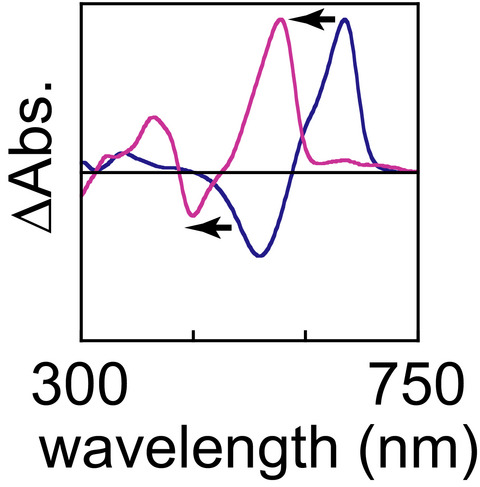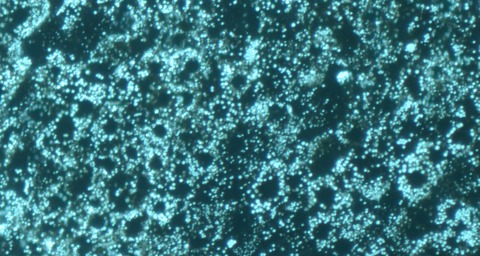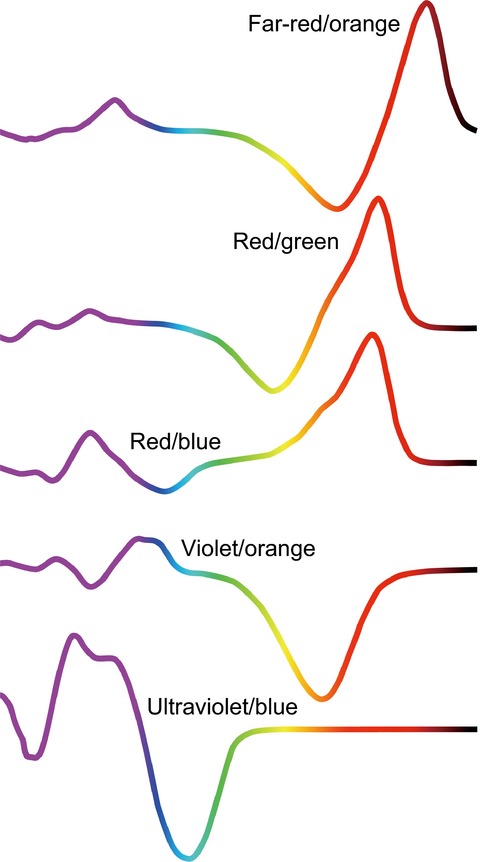Journal list menu
Export Citations
Download PDFs
Issue Information
Editorial
Introduction
Introduction, Festschrift in honor of Wolfgang Gärtner
- Pages: 640-641
- First Published: 13 May 2017
Special Issue Invited Reviews
Phytochromes from Agrobacterium fabrum
- Pages: 642-655
- First Published: 13 May 2017
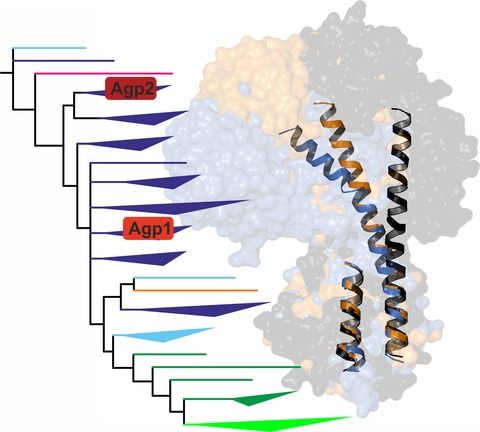
Phylogenetic tree based on the photosensory core modules (PCMs) of bacterial (blue), cyanobacterial (cyan), plant (green), fungal (orange) and diatom (magenta) phytochromes. The groups to which Agrobacterium phytochromes Agp1 and Agp2 belong are indicated. The superposed structures are from PCMs of Agp1 (orange) from Agrobacterium fabrum, a surface-engineered mutant of Agp1 (blue) and of the bathy phytochrome PaBphP (black) from Pseudomonas aeruginosa. The long helix that connects the GAF and PHY domains of phytochromes shows the different degrees of bending. Photoconversion from Pr to Pfr results in a straightening of this helix.
Casting Away the Shadows: Elucidating the Role of Light-mediated Posttranscriptional Control in Plants
- Pages: 656-665
- First Published: 13 May 2017

The advent of technologies such as RNAseq and novel bioinformatics tools allowed the finding of new insights into light-mediated posttranscriptional regulation in plants. Light mediates posttranscriptional control of plant growth and development through alternative splicing and miRNAs. The question mark represents the putative cross talk between AS and miRNA biosynthesis and/or function.
Bacterial Photosensory Proteins and Their Role in Plant–pathogen Interactions
- Pages: 666-674
- First Published: 13 May 2017
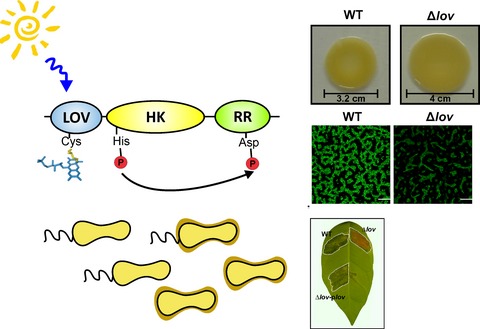
Light is an important source of energy and information, and it is perceived by photoreceptor proteins. The presence of these proteins in chemo-heterotrophic bacteria has been identified. In plant pathogenic bacteria, different red and blue light photoreceptors were found including the following: phytochromes, LOV and BLUFs proteins. The photochemistry and functionality of these receptors were demonstrated in Pseudomonas spp., Agrobacterium tumefaciens and Xanthomonas spp. Furthermore, it was confirmed that they participate during the virulence process, modulating the aggressiveness symptoms allowing the bacterial multiplication and spreading and consequently a successful host infection.
Special Issue Research Articles
A Simple Preparation Method for Phytochromobilin
- Pages: 675-680
- First Published: 13 May 2017
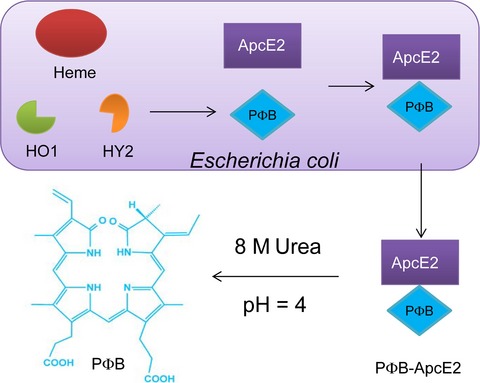
Phytochromobilin (PΦB), the chromophore of plant phytochromes, is difficult to isolate because phytochromes occur at very low concentrations in plants. In Escherichia coli, oxygenation of heme catalyzed by heme oxygenase (HO1) and subsequent reduction catalyzed by ferredoxin-dependent phytochromobilin reductase (HY2) generates phytochromobilin. Because biosynthesis of phytochromobilin is enhanced in the presence of a tailored construct of ApcE2, the apo-protein of a core–membrane linker from Synechococcus sp. PCC7335, and phytochromobilin is only noncovalently bound to ApcE2, phytochromobilin can be easily released under denaturation in the presence of 8 m urea, and phytochromobilin is conveniently and efficiently isolated by present method.
Distinctive Properties of Dark Reversion Kinetics between Two Red/Green-Type Cyanobacteriochromes and their Application in the Photoregulation of cAMP Synthesis
- Pages: 681-691
- First Published: 13 May 2017
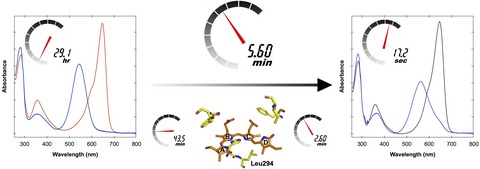
We found that cyanobacteriochrome GAF domains of AnPixJg2 and AnPixJg4 showed barely detectable and very fast dark reversion kinetics, respectively. Based on the structural information, we identified six residues involved in the dark reversion kinetics. Introduction of these six residues into AnPixJg2 resulted in 300-fold faster dark reversion than that of the wild type, which may be useful for development of optogenetic tools.
Meta-Analysis of the Transcriptome Reveals a Core Set of Shade-Avoidance Genes in Arabidopsis
- Pages: 692-702
- First Published: 13 May 2017
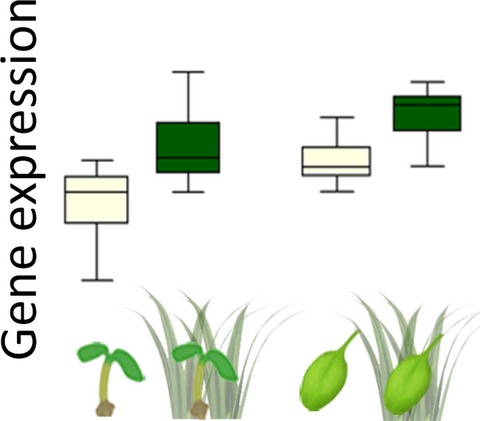
Plants respond to the shade caused by neighbours by modifying their growth pattern. These responses depend on the timing of the shade signals and on the developmental context (organ, age). Significant changes in gene expression accompany the responses but the overall structure of the transcriptional network has not been fully characterised. The meta-analysis of publicly available and new transcriptome data uncovers a core set of genes that respond consistently in different contexts, independently on whether growth is promoted or inhibited. This group of genes is connected to other layers of genes with different degrees of context dependency of their response.
Influence of Heterogeneity on the Ultrafast Photoisomerization Dynamics of Pfr in Cph1 Phytochrome
- Pages: 703-712
- First Published: 13 May 2017
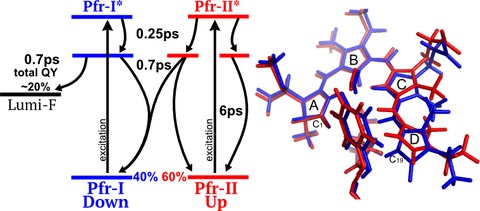
Photoisomerization of a protein-bound chromophore is the basis of light sensing and signaling in many photoreceptors. Femtosecond polarization-resolved VIS pump–IR probe spectroscopy reveals heterogeneity in the Pfr ground state of Cph1 phytochrome with distinct dynamics and quantum yields. We identified an isomerizing pathway with 0.7 ps for Pfr-I, and silent dynamics with 6 ps for Pfr-II. In combination with quantum chemistry calculations, we propose two different conformations that differ in ring D orientation and in distances to D207 and Y263, resulting in distinct hydrogen bond strengths. Hence, small changes in the protein–chromophore interaction can switch the photoreaction outcome.
Structural and Vibrational Characterization of the Chromophore Binding Site of Bacterial Phytochrome Agp1
- Pages: 713-723
- First Published: 13 May 2017
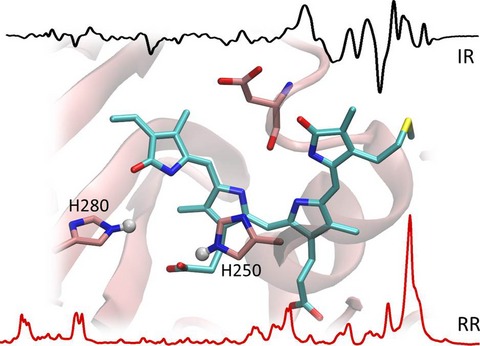
A combined computational/spectroscopic approach based on QM/MM- and electrostatic calculations and resonance Raman and IR spectroscopies was employed to generate a protonated structural model of the chromophore binding site of bacterial phytochrome Agp1. H250 and H280, involved in the photoinduced reaction mechanism, are most probably neutral charged and protonated at Nε, while a cationic H280 is also possible.
Common Structural Elements in the Chromophore Binding Pocket of the Pfr State of Bathy Phytochromes
- Pages: 724-732
- First Published: 13 May 2017
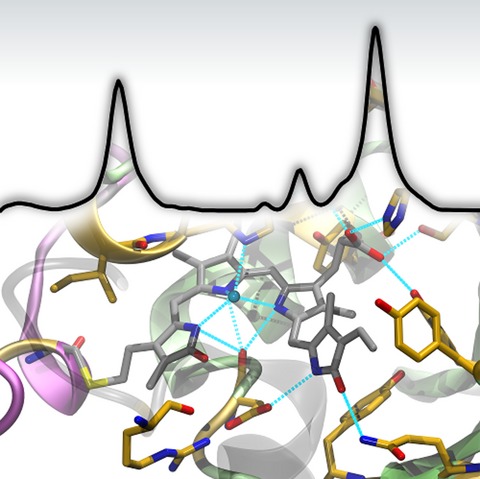
A vibrational spectroscopic and structural analysis of bathy phytochromes reveals that the unique thermal stability of the Pfr state roots in the particular hydrogen bonding interactions of the ring D N-H group of the biliverdin cofactor with the side chain of conserved Asp. In contrast to prototypical phytochromes, these interactions are further strengthened by an Arg residue that is conserved in bathy phytochromes. This specific hydrogen bond complex accounts for the rigid fixation of the biliverdin in the chromophore binding pocket and impairs thermal isomerization to the Pr state.
Time-Resolved Energetics of Photoprocesses in Prokaryotic Phytochrome-Related Photoreceptors
- Pages: 733-740
- First Published: 13 May 2017
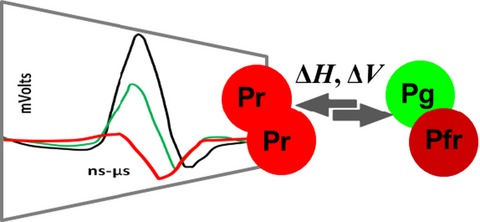
Time-resolved photoacoustics has the unique ability to monitor enthalpic and volumetric changes of early steps in a photocycle. In this work we investigated these aspects in a variety of phytochrome-related photosensors, with diverse photochromic properties, highlighting similarities and differences within this evergrowing superfamily of naturally occurring photoswitches.
There and Back Again: Loss and Reacquisition of Two-Cys Photocycles in Cyanobacteriochromes
- Pages: 741-754
- First Published: 05 January 2017
Probing the Electronic Structure of Bacteriochlorophyll Radical Ions—A Theoretical Study of the Effect of Substituents on Hyperfine Parameters
- Pages: 755-761
- First Published: 25 January 2017
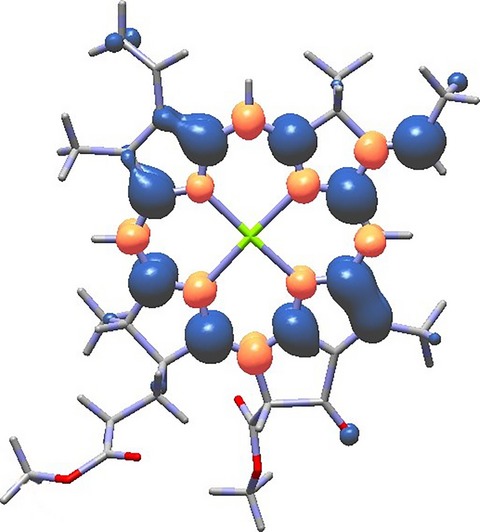
Bacteriochlorophyll and chlorophyll radicals are formed in the light-induced charge separation process in reactions centers of photosynthesis. Photosynthetic bacteria use different bacteriochlorin pigments for performing this task. In this work, DFT calculations of the radical cations and anions of BChl a, b and g are presented and compared with each other and with data from EPR/ENDOR experiments that are able to deliver the spin density distribution via measurement of the isotropic hyperfine coupling constants. The figure shows the calculated spin density distribution of BChl  .
.
Proteorhodopsin Photocycle Kinetics Between pH 5 and pH 9
- Pages: 762-771
- First Published: 13 May 2017
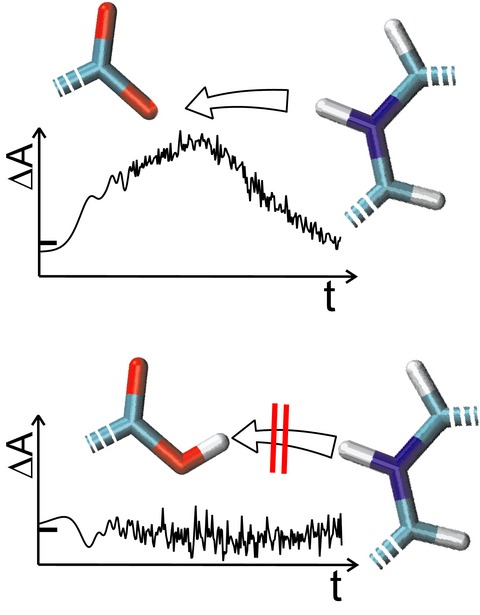
The microbial retinal protein proteorhodopsin seems to be an inefficient proton pump. Initial proton transfer (see picture) is hampered as the pKa of the proton acceptor is unexpectedly close to environmental pH. Nonetheless, no basic differences of proteorhodopsin and the model system bacteriorhodopsin (low pKa) could be detected by time resolved spectroscopy. The high pKa is suspected to be a molecular adaptation to the properties of the original organism.
Functional Expression of Gloeobacter Rhodopsin in Synechocystis sp. PCC6803
- Pages: 772-781
- First Published: 13 May 2017
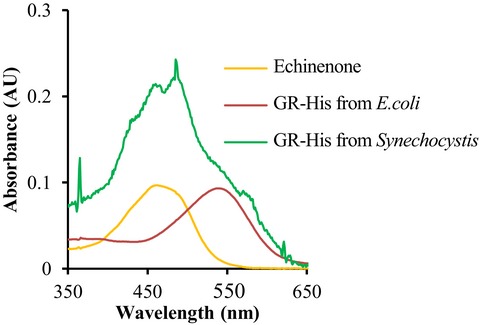
Proteorhodopsins are retinal-based light-driven proton pumps. With the larger aim in mind of increasing photosynthetic efficiency, we expressed Gloeobacter rhodopsin as an auxiliary light-energy conversion system in E. coli and in the model cyanobacterium Synechocystis sp. PCC6803. Proton-pumping rates, pigments bound, the oligomeric state and expression levels have been characterized to provide an estimate to which extent Gloeobacter rhodopsin can contribute to light-energy conversion to Synechocystis.
Photochemical Properties of the Red-shifted Channelrhodopsin Chrimson
- Pages: 782-795
- First Published: 13 May 2017
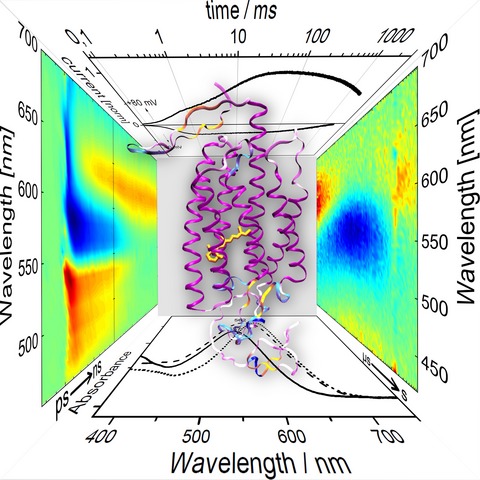
The photochemical properties of Chrimson, a channelrhodopsin with the longest wavelength absorbance maximum, were characterized at different pH values corresponding to two protonation states of the retinal Schiff base counterion. Femtosecond time-resolved absorption spectroscopy and flash-photolysis measurements reveal a strong dependence of Chrimson's photoreaction on the excitation wavelength and pH value. Electrophysiology measurements prove a functional channel opening for both protonation states of the counter-ion, but via different routes as reflected in the photochemical states observed in spectroscopic experiments.
Sensory Rhodopsin I and Sensory Rhodopsin II Form Trimers of Dimers in Complex with their Cognate Transducers
- Pages: 796-804
- First Published: 13 May 2017
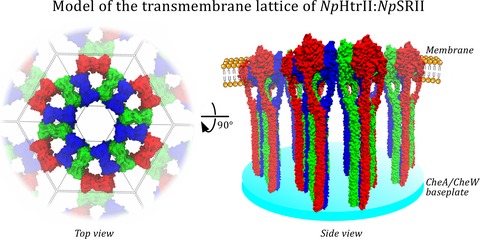
Archaeal rhodopsins in complex with their cognate transducers trigger on light excitation a two-component signaling cascade which is homologous to the chemotactic signal transduction chains in enterobacteria. Important results from the latter system indicated that amplification and adaptation occur on the level of higher order receptor arrays. Here, electron microscopy and molecular dynamics data are presented which show that also sensory rhodopsins–transducer complexes can form arrays consisting of trimers of dimers.
Integration of Temperature and Blue-Light Sensing in Acinetobacter baumannii Through the BlsA Sensor
- Pages: 805-814
- First Published: 13 May 2017
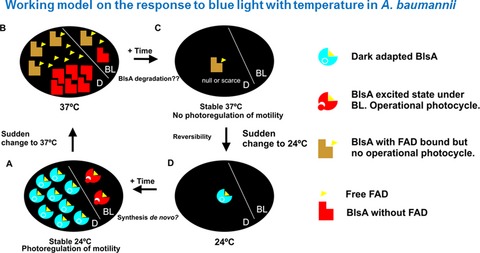
BL: blue-light and D: dark. BlsA levels shown under BL or in D were represented schematically according to transcriptional and immunoblot data. It should be noted that BlsA levels are low in the cells. Stage A. BlsA performs photocycle under blue light at 24°C; photoregulation of motility occurs. Stages B & C. At 37°C, a fraction of BlsA aggregated (B) and probably degraded (C). Soluble fraction keeps FAD bound but is almost inactive to BL (B). No photoregulation of motility occurs. It should be noted that BlsA levels are low in the cells. Stage D. Back to 24°C, the soluble fraction is still photoactive. De novo synthesis of blsA could lead again to photoregulation (A).
Quantum Chemical Spin Densities for Radical Cations of Photosynthetic Pigment Models
- Pages: 815-833
- First Published: 13 May 2017
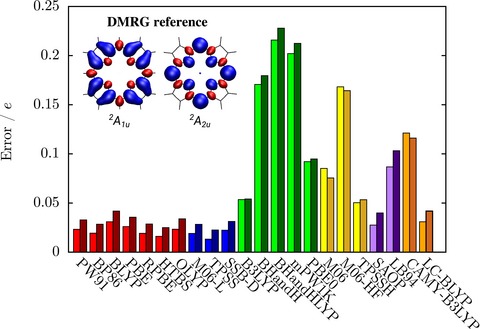
The spin densities of radical cations of magnesium porphyrin, magnesium chlorine and a truncated chlorophyll a model from various density functionals are assessed based on highly correlated multiconfigurational reference calculations using very large active orbital spaces. We find that model potentials with correct asymptotic behavior yield good spin densities, and hybrid functionals systematically increase spin-polarization effects with increasing amounts of exact exchange.
Crystal Effects on Mesobilirubin: A Combined NMR Spectroscopic and Density Functional Theory Study
- Pages: 834-843
- First Published: 13 May 2017
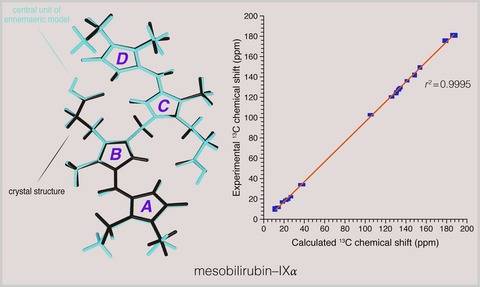
We report solid-state 1H, 13C and 15N NMR investigations of crystal effects in powdered mesobilirubin-IXα, a compound structurally related to bilirubin-IXα compound but hydrogenated at the vinyl groups. To facilitate the spectral analysis, density functional theory calculations were performed using an enneameric cluster to simulate the solid (left panel). The calculated chemical shifts for the enneamer are in a remarkably good agreement with the experimental values and thus used to interpret the spectra (right panel). The observed 13C experimental signal splittings of the peripheral carbons of the terminal rings provide evidence for microcrystalline heterogeneity of the powdered compound.
RPE65 and the Accumulation of Retinyl Esters in Mouse Retinal Pigment Epithelium
- Pages: 844-848
- First Published: 13 May 2017
Novel Thermostable Flavin-binding Fluorescent Proteins from Thermophilic Organisms
- Pages: 849-856
- First Published: 13 May 2017
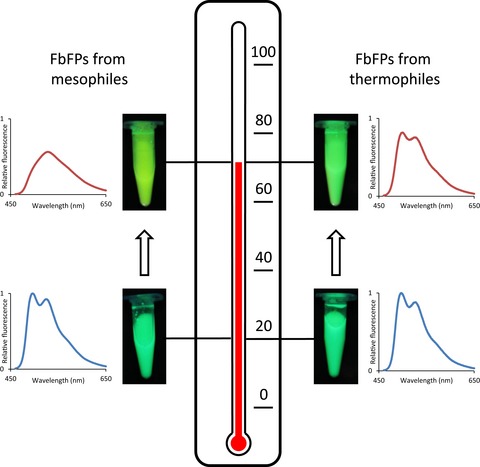
Flavin-binding fluorescent proteins (FbFPs) are small, oxygen-independent fluorescent reporter proteins, derived from Light Oxygen Voltage (LOV) domains, which act as blue light photoreceptors in bacteria and plants. We investigated the thermostability of existing FbFPs and designed new FbFPs based on LOV domains found in genome sequences of various thermophilic bacteria. Two of those novel fluorescent reporter proteins are highly thermostable, exhibiting melting temperatures above 75°C.
Characterization of the Blue–Light-Activated Adenylyl Cyclase mPAC by Flash Photolysis and FTIR Spectroscopy
- Pages: 857-864
- First Published: 13 May 2017
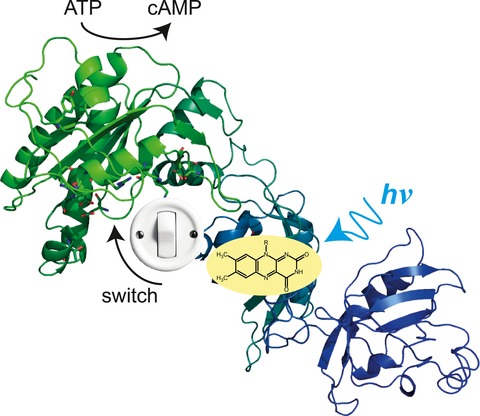
PACs are photo-activated adenylyl cyclases which represent a new tool in optogenetics, as the level of the second messenger cAMP can be rapidly and remotely changed by illumination with blue light. Here, a novel PAC that employs a LOV domain with flavinmononucleotide as chromophore for blue-light sensing is characterized by molecular spectroscopy. Time-resolved UV/vis and FTIR difference spectroscopy have been employed to resolve the light-induced structural changes that are triggered by the photoactivation of the LOV domain and transduced to the adenylyl cyclase domain.
UV-Resistant Actinobacteria from High-Altitude Andean Lakes: Isolation, Characterization and Antagonistic Activities
- Pages: 865-880
- First Published: 13 May 2017

HAALs constitute a largely unexplored repository of UV-resistant actinobacteria, with high potential for the biodiscovery of novel natural products. In this work, we performed the first extensive isolation of polyextremophilic actinobacteria from soils, water, sediments and modern stromatolites, covering representatives of Streptomyces, Micrococcus, Nesterenkonia, Rhodococcus, Microbacterium, Kokuria, Arthrobacter, Micromonospora, Blastococcus, Citrococcus and Brevibacterium.
Light-Induced Conformational Changes in the Plant Cryptochrome Photolyase Homology Region Resolved by Selective Isotope Labeling and Infrared Spectroscopy
- Pages: 881-887
- First Published: 13 May 2017
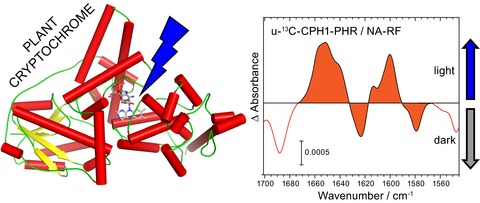
Conformational changes in the blue light receptor plant cryptochrome have been found in the C-terminal extension (CCT), but few studies have addressed the changes in secondary structure in the sensory photolyase homology region (PHR). Here, we investigated the PHR by light-induced infrared difference spectroscopy after establishing a global 13C and 15N labeling that preserves the chromophore flavin at natural abundance. As a result, difference bands are revealed that are assigned to prominent conformational changes in the PHR by illumination. We postulate that in addition to those in the CCT also changes in the PHR may mediate signaling events.
Excitation Energies of Canonical Nucleobases Computed by Multiconfigurational Perturbation Theories†
- Pages: 888-902
- First Published: 13 May 2017

The photochemistry of nucleobases (NBs) is of paramount importance because they are building blocks of DNA and RNA that store genetic information. In this computational work we assess the performance of accurate ab initio multireference quantum chemical methods for the calculation of the vertical excitation energies of five NBs: adenine, guanine, cytosine, thymine and uracil. In total we have studied 38 singlet and 30 triplet excited states.
Special Issue Highlight Article
The Expanded Red/Green Cyanobacteriochrome Lineage: An Evolutionary Hot Spot
- Pages: 903-906
- First Published: 13 May 2017
Corrigendum
Epigenetically Enhanced Photodynamic Therapy (ePDT) is Superior to Conventional Photodynamic Therapy for Inducing Apoptosis in Cutaneous T-Cell Lymphoma
- Page: 907
- First Published: 13 May 2017





